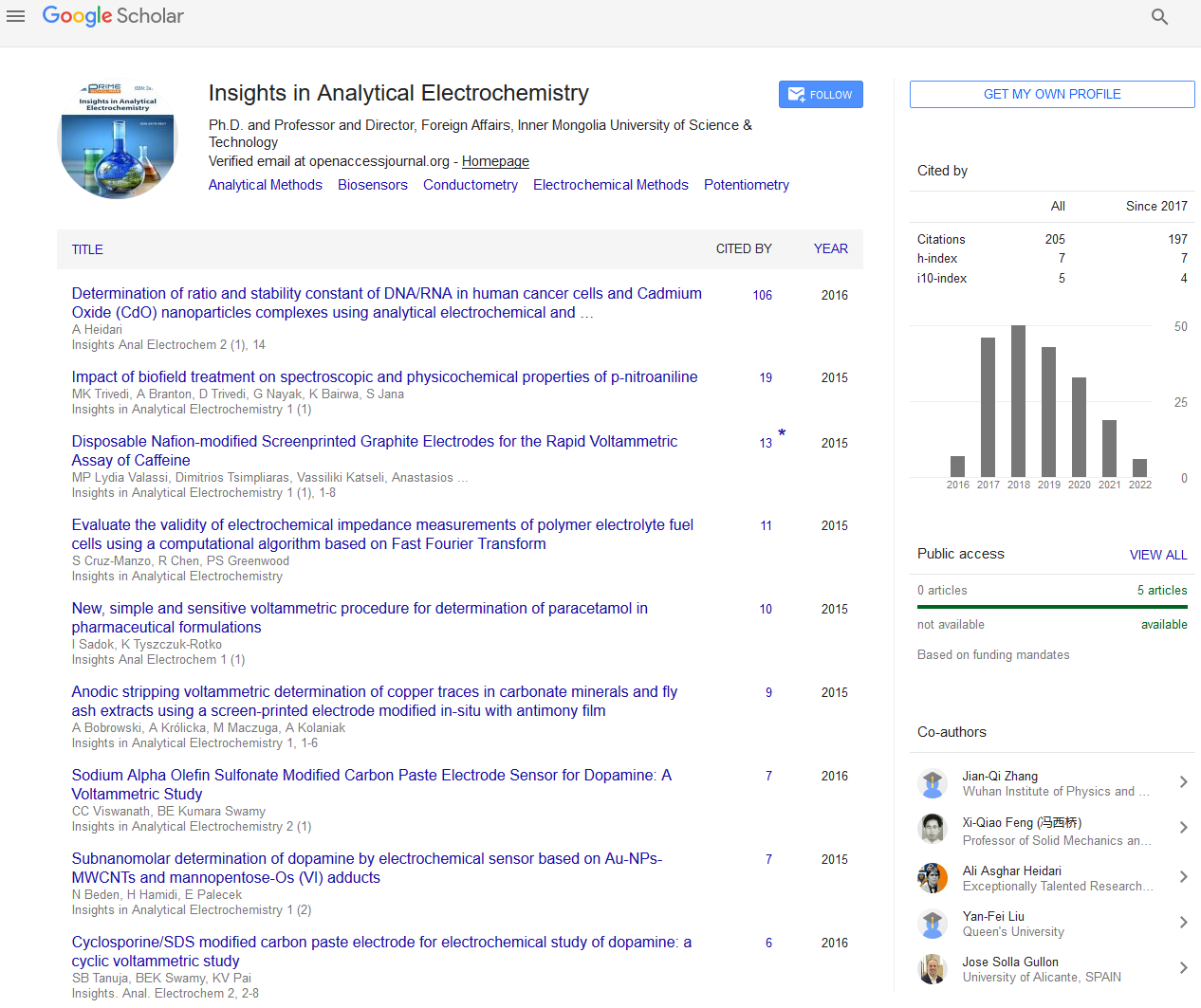Opinion - (2024) Volume 10, Issue 2
Electrochemistry: Powering the Future with Chemical Reactions
Yao Cao*
Department of Electrochemistry, Fudan University, China
*Correspondence:
Yao Cao,
Department of Electrochemistry, Fudan University,
China,
Email:
Received: 29-May-2024, Manuscript No. IPAEI-24-20793;
Editor assigned: 31-May-2024, Pre QC No. IPAEI-24-20793 (PQ);
Reviewed: 14-Jun-2024, QC No. IPAEI-24-20793;
Revised: 19-Jun-2024, Manuscript No. IPAEI-24-20793 (R);
Published:
26-Jun-2024, DOI: 10.36648/2470-9867.24.10.17
Introduction
Electrochemistry is a branch of chemistry that studies the
relationship between electrical energy and chemical changes.
This interdisciplinary field is crucial for various applications,
including energy storage, corrosion prevention, and bio
sensing. By understanding the principles of electrochemistry,
scientists and engineers are developing innovative
technologies to address some of the most pressing challenges
of our time, such as sustainable energy and environmental
protection. Electrochemical cells are devices that convert
chemical energy into electrical energy through redox reactions.
While electrochemistry has enabled significant technological
advancements, several challenges remain. Improving the
efficiency, cost-effectiveness, and environmental impact
of electrochemical processes is critical for sustainable
development. Research efforts focus on developing new
materials, optimizing reaction conditions, and integrating
electrochemical systems with renewable energy sources.
Description
Electrochemical cells are devices that convert chemical energy
into electrical energy through redox reactions. Galvanic Cells
generate electrical energy from spontaneous redox reactions.
A common example is the Daniell cell, which uses zinc and
copper electrodes submerged in their respective sulphate
solutions. The flow of electrons from the zinc to the copper
electrode through an external circuit produces electric
current. In these cells, electrical energy is used to drive nonspontaneous
chemical reactions. A classic example is water
electrolysis, where an electric current splits water into hydrogen
and oxygen gases. Electrodes are conductive materials where
redox reactions occur. The anode is the electrode where
oxidation takes place, and the cathode is where reduction
occurs. Electrolytes are ionic substances that facilitate the
movement of ions between the electrodes, ensuring the
continuity of the redox process. Electrode potential, also
known as redox potential, is a measure of the tendency of
a chemical species to be reduced or oxidized. It is measured
in volts and is determined relative to a standard reference
electrode, typically the Standard Hydrogen Electrode (SHE).
The electrode potential is crucial for predicting the direction
and feasibility of redox reactions. Faraday’s laws quantify the
relationship between the amount of substance altered at an
electrode and the quantity of electricity passed through the
electrolyte. The first law states that the amount of substance
deposited or dissolved is directly proportional to the electric
charge. The second law states that the amount of different
substances produced by the same quantity of electricity is
proportional to their equivalent weights. Electrochemical
energy storage devices, such as batteries and super capacitors,
are indispensable in modern technology. Lithium-ion batteries,
for instance, are widely used in portable electronics, electric
vehicles, and renewable energy systems. Advances in battery
technology, including the development of solid-state batteries
and novel electrode materials, aim to enhance energy density,
safety, and longevity.
Conclusion
Electrochemistry is a dynamic and impactful field that bridges
the gap between chemical reactions and electrical energy. Its
principles and applications are foundational to many modern
technologies, from batteries and fuel cells to sensors and
corrosion protection. As the world seeks sustainable and
efficient solutions to energy and environmental challenges,
electrochemistry will continue to play a pivotal role in shaping
the future. Through on-going research and interdisciplinary
collaboration, electrochemistry promises to deliver
breakthroughs that enhance our quality of life and safeguard
our planet.
Acknowledgement
None.
Conflict Of Interest
The author’s declared that they have no conflict of interest.
Citation: Cao Y (2024) Electrochemistry: Powering the Future with Chemical Reactions. Insights Anal Electrochem. 10:17
Copyright: © 2024 Cao Y. This is an open-access article distributed under the terms of the Creative Commons Attribution License,
which permits unrestricted use, distribution, and reproduction in any medium, provided the original author and source are
credited.

